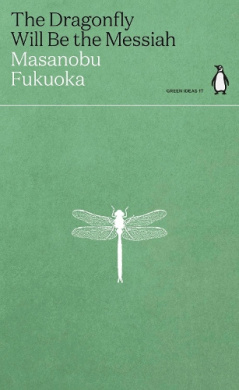Description
During germination, the most resistant stage of the life cycle – the seed – changes to the most sensitive stage, namely the seedling. Therefore, in desert plant species seed dispersal and subsequent germination in the optimum time an place place are particularly critical parameters. Discussed here are the ways and means by which desert plants have adapted through the course of evolution to their extreme environment. Two such strategies which have evolved are a) plants with relatively large and protected seeds which germinate when the chance of seedling survival is high and the risk relatively low or b) those with an opportunistic strategy: minute seeds which germinate after low rainfall under high risk for seedling survival if additional rain does not follow. Most species adopt a combination of the two mechanisms. Species have adapted both genotypically and phenotypically, both aspects of which are also discussed in this thorough text. The reader is provided with a good understanding of the complex influences on each seed traced through from initial development to germination stage regarding germination preparation and subsequent survival. 1 The Negev Desert of Israel and Other Hot Deserts of the World: Classification According to Quantities, Distribution and Seasons of Rain. Their Influences on the Germination of Desert Plants.- 1.1 Classification of Deserts of Semi-Arid and Arid Zones and the Season of Rain.- 1.2 Abiotic Environmental Factors of the Negev Desert.- 1.2.1 Quantities and Distribution of Rain.- 1.2.2 Range of Temperatures, Relative Humidity and Dew.- 1.2.3 Species, Length of Growing Season, Environmental and Micro-Habitat Effects.- 1.2.4 Habitats and Topographic Sites.- 1.3 Some Biotic Factors Affecting the Vegetation of the Negev Desert.- 1.3.1 Overgrazing and the Activity of Seed Eaters.- 1.3.2 Porcupine Diggings as a Favourable Desert Micro-Habitat.- 1.4 Autecological Adaptations, Life Forms and the Annual Cycle of Desert Angiospermae.- 1.4.1 Arido-Passive Perennials and Annuals.- 1.4.2 Arido-Active Plants.- 1.4.3 Species, Ecogenotypes and Ecotypes.- 1.4.4 Genotypic and Phenotypic Influences on Seed Germination.- 2 Phenotypic Effects on Seeds During Development.- 2.1 Introduction.- 2.2 Position Effects.- 2.2.1 Position Effects in Plants with Aerial and Subterranian Fruits (Amphicarpy).- 2.2.2 Position of the Capsules on the Plant Canopy Affects Germination.- 2.2.3 Position Effects of Seeds in the Inflorescence When It Is a Dispersal Unit.- 2.2.4 Position of Achenes in the Capitulum Whorls and Their Germination.- 2.2.5 Position of Female and Hermaphroditic Flowers and Their Seed Germinability.- 2.2.6 Position of Flowers and Dimorphism.- 2.2.7 Position, Heteromorphism and Germinability.- 2.2.8 Position Effect of Seeds in the Fruit.- 2.2.9 Position and Annual Rhythm in Seed Germinability.- 2.3 Age Effects.- 2.3.1 Senescence of the Mother Plant Affecting Seed Germination.- 2.3.2 Age of the Mother Plants Affecting Seed Germination Was also Found in Non-Desert Plants.- 2.4 Environmental Effects.- 2.4.1 Photothermal and Position Effects.- 2.4.2 Day Length Affecting Seed Germination of Plant Species with Dry Fruit.- 2.4.3 Day Length Affecting Seed Germination of Species with Soft Fruit.- 2.4.4 The Critical Time for the Day Length Effects.- 2.4.5 Natural Conditions of Maturation During Summer and Autumn Affecting Seed Germination.- 2.4.6 Natural Winter, Spring or Summer Conditions of Maturation Affecting Seed Germinability.- 2.4.7 Altitudinal Effects.- 2.4.8 Influences of Light Quality During Maturation on Seed Germination.- 2.4.9 Temperatures During Maturation Affecting Seed Germination.- 2.4.10 Conditions of Maturation and Different Levels of Germination Under Different Temperatures During Imbibition.- 2.4.11 Water Stress During Maturation Affecting Seed Germination.- 2.4.12 Dimorphism and Achene Germination Dependent on Plant Size.- 2.4.13 Heterocarpy and Germinability.- 2.5 Polymorphic Seeds and Germination.- 2.6 Conclusions.- 3 Seed Dispersal and Seed Predation of Plants Species in the Negev Desert.- 3.1 The Annual Cycle of Seed Maturation and Dispersal of Some of the Common Species in the Negev Desert Highlands.- 3.2 Seed Maturation and Dispersal in Summer.- 3.2.1 Seed Dispersal by Wind.- 3.2.2 Porcupine Diggings and Other Depressions as Wind-Traps for Seeds, and the ‘Treasure Effect’.- 3.2.3 Seed Predation and Seed Dispersal by Ants, Birds and Mammals.- 3.2.4 Changes in the ‘Seed Bank’ – During Summer.- 3.2.5 Seed Dynamics in the Soil of Species Dispersed by Wind.- 3.2.6 Changes in the ‘Seed Bank’ of Plants That Disperse Their Seeds by Rain.- 3.3 Seed Maturation in Summer and Dispersal by Rain in Winter.- 3.3.1 Plants Whose Seeds Are Dispersed by Rain (Ombrohydrochory) and/or Runoff Water.- 3.3.2 Mechanisms of Seed Release by Rain.- 3.3.3 Differences in Dispersal Mechanisms of Some Groups of Species.- 3.4 Seed Maturation in Summer and Germination in Situ (Atelechory) in Winter.- 3.5 Seeds That Mature and Are Dispersed in Winter.- 3.6 Heterocarpy and Species Survival.- 3.7 Conclusions.- 4 Storage Conditions Affecting the Germinability of Seeds in the Seed Bank.- 4.1 Introduction.- 4.1.1 Seed Bank Location of Some Desert Plant Species.- 4.1.2 Soil and Seed Turnover.- 4.1.3 Environmental Factors and the Changes at Different Soil Depths.- 4.2 Seed Internal and Environmental Factors During Storage Affecting Germination.- 4.2.1 Seed Coat Effects.- 4.2.2 Short, Wet Storage at High Temperatures.- 4.2.3 The Short-Term Changes of Seeds Influenced by Temperatures During Dry Storage.- 4.2.4 Long-Term Changes During Dry Storage and Viability.- 4.3 Conclusions.- 4.3.1 Short-Storage Seeds.- 4.3.2 Long-Storage Seeds and Regulation of Germination.- 4.3.3 Seeds with Strategies of Dispersal and Germination over Many Years.- 5 Environmental Factors During Seed Imbibition Affecting Germination.- 5.1 Introduction.- 5.1.1 Germination at the Right Time.- 5.1.2 The Genotypic and Phenotypic Regulation for Seed Germination.- 5.1.3 High- or Low-Risk Strategies for Seed Dispersal and Germination.- 5.2 Water.- 5.2.1 The Minimum Amount of Rain That Engenders Germination in Desert Plants?.- 5.2.2 Germination Inhibitors as ‘Rain Gauges’.- 5.3 The Period of Wetting for Germination.- 5.3.1 Fast-Germinating Seeds.- 5.3.2 Slow-Germinating Seeds.- 5.3.3 Air, Mucilaginous Seeds (Myxospermy) and Seed Germination.- 5.4 Temperature.- 5.4.1 Temperature and Germination of Winter or Summer Annuals.- 5.4.2 Temperatures, Day Length and Seasonal Genoecotypes.- 5.4.3 Thermodormancy and Winter-Germinating Species.- 5.4.4 Summer-Germinating Species.- 5.4.5 Different Strategies of Two Negev Plants.- 5.4.6 Species Habitat, Speed and Range of Temperatures for Germination.- 5.4.7 Thermoperiodism Affecting Seed Germination.- 5.5 Light and Germination.- 5.5.1 Maturation in Natural Conditions Affecting Seed Light Sensitivity.- 5.5.2 Maturation under Artificial Light Affecting Seed Light Sensitivity.- 5.5.3 Storage Conditions and Seed Light Sensitivity.- 5.5.4 Types of Response of Seeds to Light.- 5.6 Annual Rhythm Regulating Seed Germination.- 5.7 Mass Germination and Seedling Emergence from Below the Soil Crust.- 5.8 Conclusion.- 6 Germination, the Survival of Seedlings and Competition.- 6.1 Introduction.- 6.1.1 Selective Process of Seed Germination and Seedling Survival.- 6.1.2 Rain Amount, Distribution and Survival.- 6.1.3 Micro-Habitat and Seedling Survival.- 6.1.4 Day Length and Water Stress Affecting Life Span of Annuals.- 6.2 ‘Opportunistic’ or ‘Cautious’ Strategy. Low or High Chance of Seedling Survival.- 6.2.1 Seedling Congestion and Survival.- 6.3 Depressions and Porcupine Diggings as Favourable Micro-Habitats in the Desert.- 6.4 Drought Tolerance and the Survival of Seedlings.- 6.4.1 Seedling ‘Point of No Return’.- 6.4.2 Plant Drought Tolerance.- 6.5 Mass Germination and Age Groups Replace Dead Plants.- 6.6 Conclusion.- 7 Conclusion.- References.- Latin Name Index.






